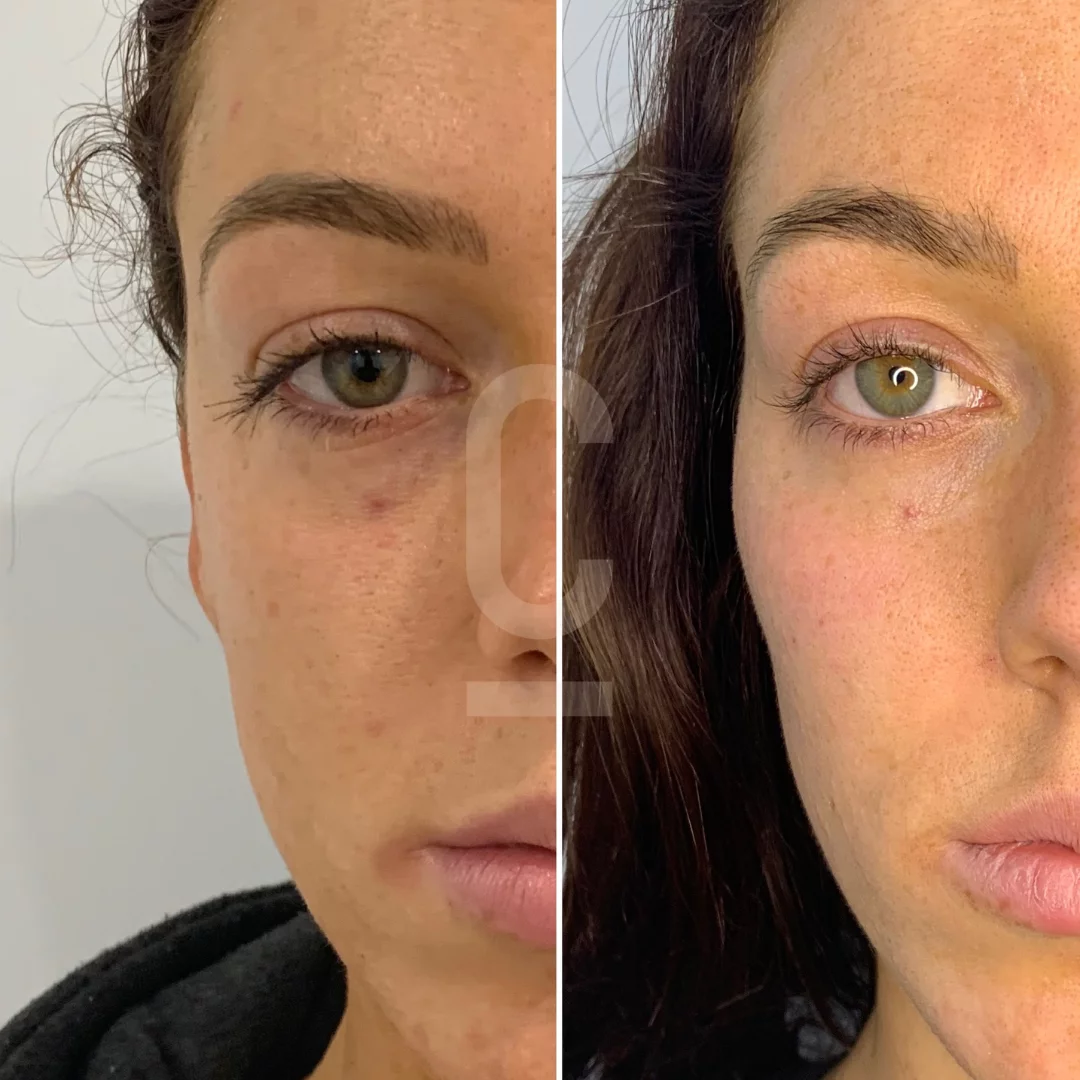











Filler migration is the movement of a dermal filler from its injection site to another area of the body. While it is possible for fillers to migrate, this side effect is extremely rare and can be avoided by choosing a qualified injector.
Though filler migration is very uncommon, its likelihood increases when fillers are performed by an inexperienced or underqualified injector. With the increased popularity of facial fillers over the past decade, there have never been more clinics offering cosmetic injectables; however, this has led to an abundance of poorly trained, unprofessional practitioners performing injections.
Getting too much filler: Facial filler migration can occur when the incorrect filler is used in the incorrect spot. If a thin, low-cohesive filler is applied in large amounts in an area where a thicker, more cohesive filler would have been a better choice, the filler can tend to settle or fail to adhere.
Getting filler too frequently: Like other aesthetic treatments, maintenance can be important for keeping results, but you never want to over treat any areas of your face. In fact, filler appointments need to be spaced methodically.
Type of filler: Different types of fillers have different rheological properties and may be more or less prone to migration. For example, some fillers are more cohesive, meaning they are less likely to spread or migrate from the injection site.
Skin structure and anatomy: The individual’s skin structure and anatomy may also play a role in dermal filler migration. For example, if the skin is thin or has a lot of movement, the filler may be more likely to migrate. Generally people with softer skin tissue are more prone to migration.
Asymmetry: If you notice any unevenness or differences in volume between the treated areas this can be a sign of filler migration, as it can cause one side of the face to appear fuller than the other.
Lumpiness or Bumps: If you feel palpable bumps in the treated area, these can be indicators of filler that has shifted or accumulated in one spot.
Change in Shape or Position: If you observe the shape or position of the treated area has altered, filler migration may cause the area to deviate from its original contour.
Discoloration or Bruising: Look for changes in skin color or persistent bruising in the treated region, which could be associated with filler migration.
Painless Movement: Gently press on the treated area to check if the filler feels mobile or moves easily. Filler that shifts with minimal pressure can indicate migration.
Gradual Changes: Keep track of any gradual alterations in your facial appearance including puffiness, especially in the lip areas. Slow changes may signal filler migration over time.

The best way to prevent migration is to rely on a board-certified dermatologist to handle your injections.
They have the expertise and capability to provide you with the right dermal fillers in the correct amounts and in the best treatment areas. Board-certified dermatologists know how to minimize your risk of side effects like filler migration.
If your filler has moved, there is no need to panic. First, confirm with your practitioner that it is indeed filler migration, not swelling or another side effect.
Hyaluronic acid filler will dissolve on with time, whether it’s in its original location or not. It’s not harmful if it moves, but aesthetically, it isn’t the desired result. In that case, your injector can dissolve filler with hyaluronidase, an enzyme that breaks down the hyaluronic acid used for fillers.
If you choose to dissolve it with hyaluronidase, you want to ensure that your issue is filler migration, or it’ll dissolve your body’s natural hyaluronic acid. Done correctly, “the best part is that you’ll see results from it dissolving pretty quickly.
Filler migration, though a potential complication, can often be prevented and effectively managed.
Choosing a qualified professional, understanding the factors contributing to migration, and being aware of available treatment options are essential aspects for anyone considering or undergoing cosmetic filler treatments.
Remember, consultation and ongoing communication with your injector are key to achieving satisfying and safe results.
Dermal filler migration is a genuine concern that should not be taken lightly, but it can be significantly minimized by choosing the right practitioner and products.
Understanding the causes of migration empowers patients to make informed decisions about their treatments.
Remember, aesthetic medicine is an evolving field, and practitioners dedicated to research and continual improvement offer the best chances of a successful and satisfying outcome. So, do your research, choose wisely, and embark on your aesthetic journey with confidence.